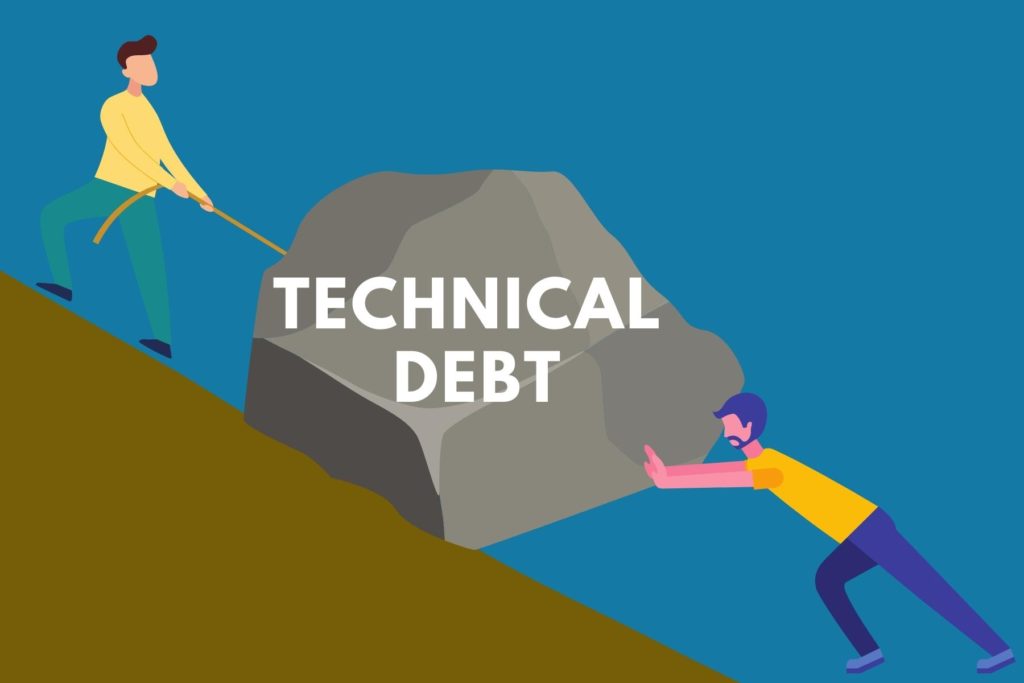Reducing technical debt is a little like the challenges facing superheroes and their significant others:
Batman and Rachel Dawes
Wonder Woman and Steve Trevor
Spiderman and MJ
Save the world or save your loved one because you can’t do both.
Network congestion, bugs and quick fixes known as technical debt present a similar, albeit less cinematic dilemma.
Do the job right or do it fast, but you can’t do both.
Given today’s digital-first buyers, more than ever, organizations must infuse the right technology into their processes, whether it’s more efficient sales and marketing, better customer service, or simply aligning products and services with customer needs.
However, as companies attempt to modernize their IT, technical debt (aka tech debt) undermines their efforts and becomes a barrier to digital transformation. Yet long before digital transformation became a hot topic, tech debt has been wreaking havoc in the IT department.
The Problem with Tech Debt
As sure as death and taxes, there will always be timelines and deadlines. Under pressure to move quickly, IT professionals are constantly forced to choose between meeting the deadline or cleaning up their code. Employees can use tech debt to do something faster, but that debt will become a problem for future problems, a bandaid on a bullet wound.
Too much tech debt makes companies slower to pivot, slower to adapt, and slower to execute. Old and outdated code makes integrating new products difficult. Challenges hidden in the architecture can make projects run over budget. As a result, much of IT employees’ time is spent managing complexity, thus losing the thrill of creating new features.
In a recent LinkedIn post, Hello Fresh Senior Backend Engineer Muhammad Sufyian reported, “I have observed that tech debt adds to low retention as teams end up spending most of their time in bug fixes and incidents. The morale of the team goes down with no energy for innovation.”
Some take a zen approach to technical debt, believing it’s neither good nor bad, just a reality of IT life. However, any zen master would agree there are times when enough is enough.

Here’s the true story of a company who recently leaned into digital transformation by reducing technical debt.
A Tech Debt Dilemma: Dell Technologies
Dell’s 10+ year Salesforce instance was weighed down with technical debt and over-customization. This caused slow page load times, performance issues and problems with software upgrades. In addition, their Salesforce instance contained complex custom code which housed lead routing logic that only a few people understood.
When a change in logic was needed, Marketing Ops team members had to work with IT to request the change. And with routing logic going through IT, individual changes would be implemented without being fielded by related departments to ensure it complied with global processes and best practices.
Manual and redundant routing measures became the norm due to regional logic exceptions and, as a result, leads were taking much longer to get to the Sales Team. Some sales reps were waiting as long as one month to have a lead routed to them, leaving a horrible first impression to the prospective customer.
Dell’s challenges perfectly illustrate how technical debt starts with IT, but its tentacles reach out across other divisions impacting many processes and ultimately, the customer experience.
Strategies to Reduce Technical Debt
One of the best ways to tackle technical debt is to treat it as a business issue, not simply a technology problem. IT professionals recommend that a portion of the IT budget should be allocated to reducing technical debt consistently rather than all at once.
In a recent LinkedIn post, one developer suggested that companies have regular “tech debt” days where IT professionals review their to-do lists and then:
- Reevaluate the business need
- Clean up and reprioritize
- Identify low-hanging fruit and add to scope
- Raise funds for big ticket items with proper justification and ROI
Another verification architect suggested that where possible, convert technical debt into monetary debt so leadership can see what prevents the company from keeping up with the market. McKinsey Digital has created a metric known as Technical Debt Score to help organizations quantify their technical debt and compare it with industry peers.
An Operational Approach to Tech Debt Reduction
Dell’s approach to reducing technical debt in their Salesforce instance was to lean into digital transformation. Dell implemented a lead routing solution, a no-code, native application within Salesforce, and completely changed ownership of the lead management process. Any modifications to lead routing logic became the decision of Marketing Ops rather than IT.
With greater control over routing decisions, Marketing Ops could eliminate inconsistencies across regions, and allow for a global process to be established for all leads. Over 25,000 sales reps across the globe now receive leads almost instantaneously. Audit logs within the lead routing solution quickly pinpoint and correct any routing issues.
What was once slow, manual work is now streamlined, automated functionality, a key component of digital transformation.
Leaning Into Digital Transformation
Not all superheroes have to give up their loved ones to save the world (Captain America, Ant Man and Aquaman found a way to make it work). Likewise, the “Do the job right, or do it fast” tech debt mentality is not always true.
Managing technical debt is clearly a balancing act.
Dell Technologies found a solution that actually decreased the IT workload. As more B2B companies are forced to accommodate a digital-first, buyer-led journey, reducing technical debt will be key to their digital transformation success.













